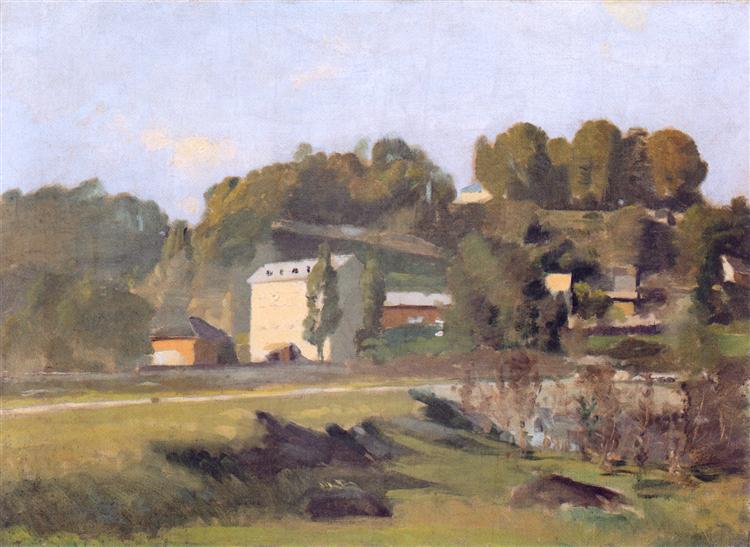Description
Ferdinand Hodler, one of the most prominent Swiss painters of the nineteenth century, captured in his work "El Molino de Sous Terre in Geneva - 1878" A rural scene loaded with an almost evocative serenity. Observing the painting, a world is discovered where time seems to slow down, allowing each element to shine with its own identity and voice.
The mill, located in the center of the paint, stands as the undisputed protagonist of the scene. Its robust and ancestral structure, characterized by inclined roofs and stone walls, stands as a lighthouse of stability and permanence in the middle of the landscape. The backdrop has a series of trees that embrace the mill, permeating the atmosphere with a feeling of tranquility and shelter. The colors, mostly lands and green olive groves, enhance an autumnal landscape that denotes a time of harvest and transition.
The sky, a crucial part of many works by Hodler, does not go unnoticed in this painting. Here, the sky is a pale blue, almost fading towards the horizon, which suggests a clear but cold day. The transition of colors and the care with which they are applied shows Hodler's meticulousness in capturing the atmosphere of the scene.
Interestingly, human figures are not found in this work. The absence of characters allows the viewer to concentrate completely on the relationship between natural and artificial elements. The stillness of the mill and its surroundings suggests a continuous duration; Time seems to have passed slowly, allowing nature and man to coexist in harmony.
The use of light is another notable aspect in the composition. Soft and natural lighting is reflected in surface textures and in the way in which trees project subtle shadows. This technique not only adds a dimension of depth to painting, but also helps establish a melancholic and meditative tone.
Hodler's style in this particular work reflects a transition in his artistic career. Over time, Hodler moved towards a more obvious symbolism and towards abstraction in its pictorial forms, but "the Sous Terre mill in Geneva - 1878" is a testimony of its early domain of realism and its ability to capture the essence of the essence of the Swiss landscape. Other works by Hodler, such as "The Night" and "The Day", show a change towards the exploration of symbolism and the cycle of life, but this painting maintains a more traditional and realistic vision intact.
"Hodler's choice to represent a mill is not merely casual; the water mills were symbols of self -sufficiency and sustainability in many rural communities. This selection reflects a deep connection with its environment and an admiration for the simplicity and functionality of these elements architectural
In summary, "the Sous Terre mill in Geneva - 1878" encapsulates a pastoral stillness that allows the viewer to feel the soft breeze and listen to the rumor of the water moved by the mill blades. It is undoubtedly a work that resonates with calm and introspection, and that reflects the mastery of Ferdinand Hodler in the use of color, light and composition to capture the essence of a place and a moment in time. The simplicity of the scene, along with its detailed execution, turns this painting into a jewel of the nineteenth -century landscape art.
KUADROS ©, a famous paint on your wall.
Hand-made oil painting reproductions, with the quality of professional artists and the distinctive seal of KUADROS ©.
Art reproduction service with satisfaction guarantee. If you are not completely satisfied with the replica of your painting, we refund your money 100%.

